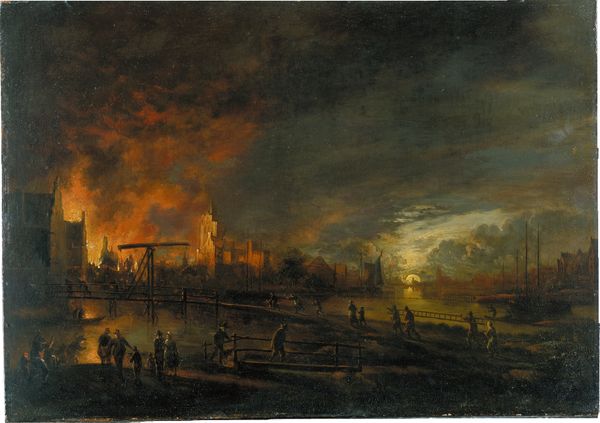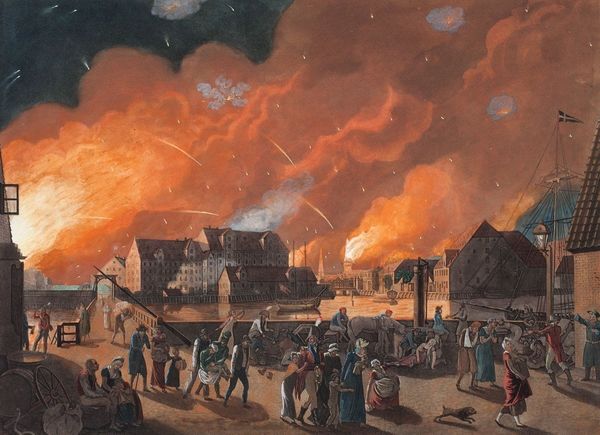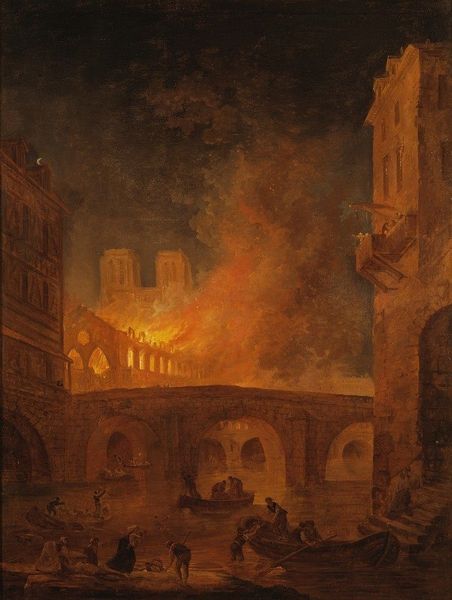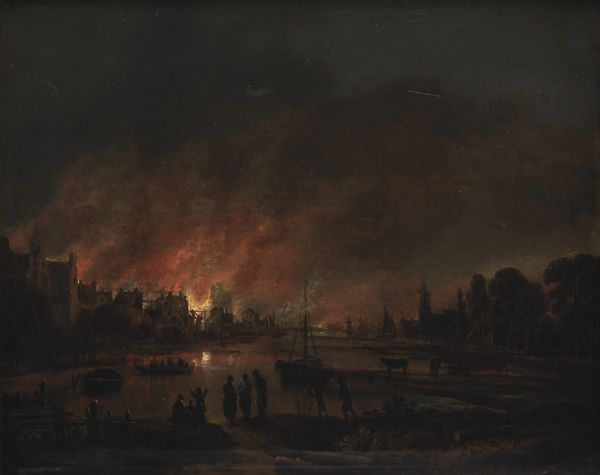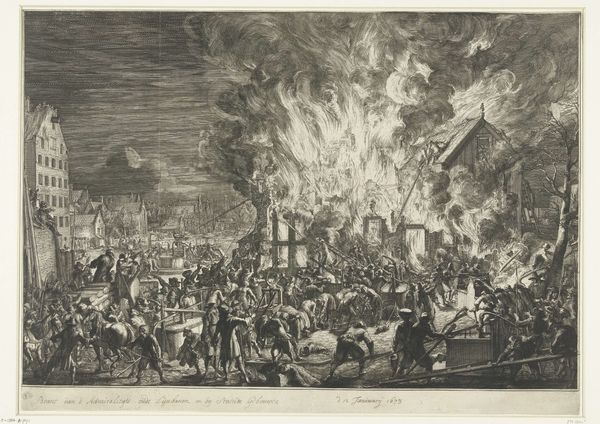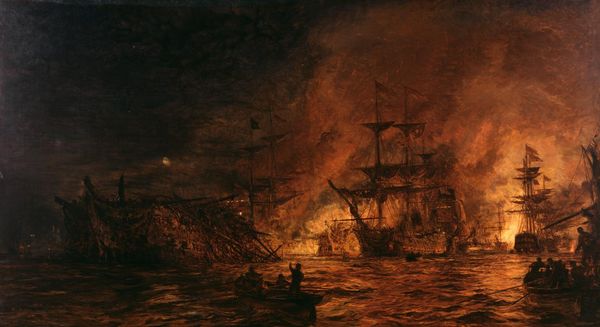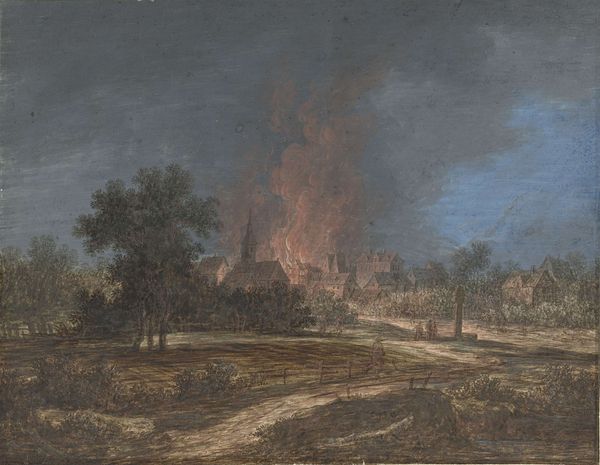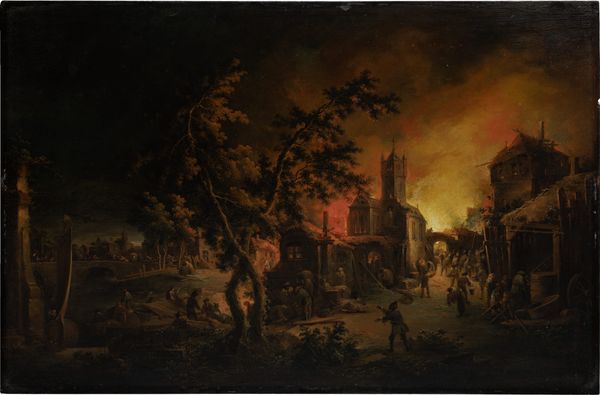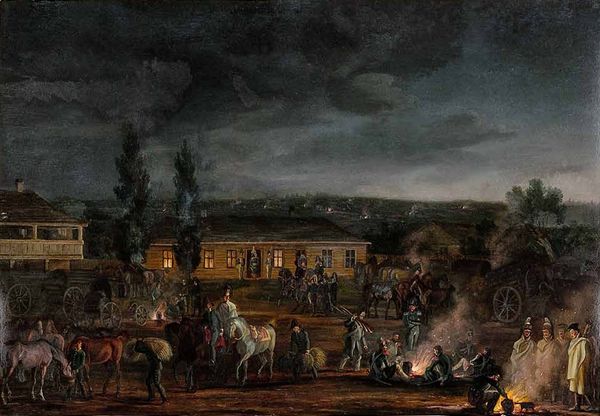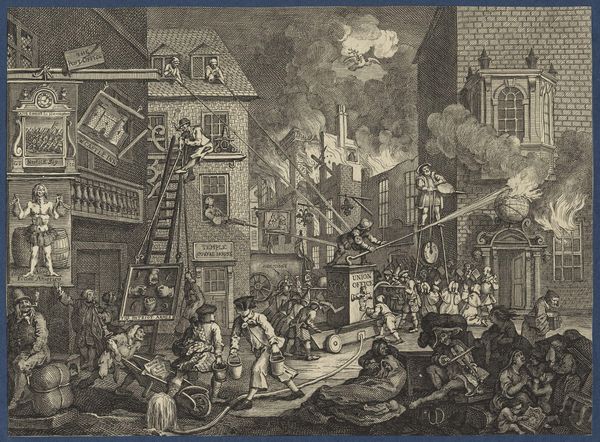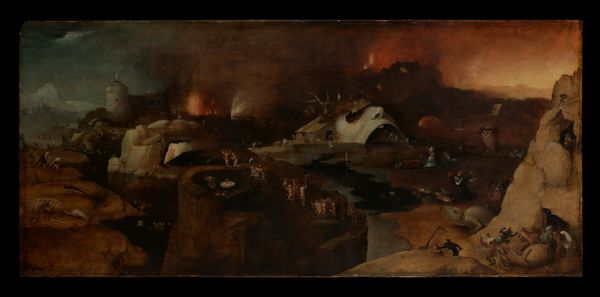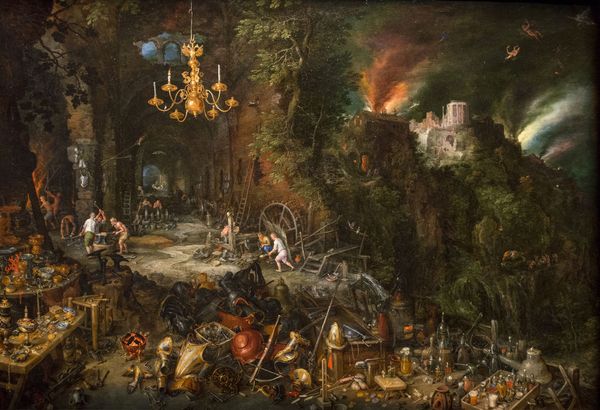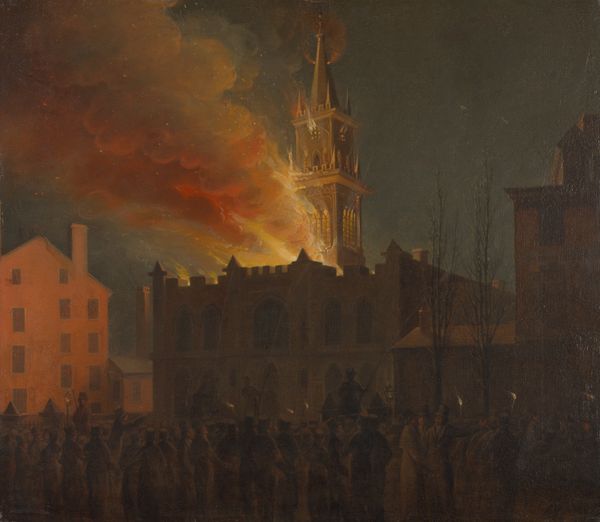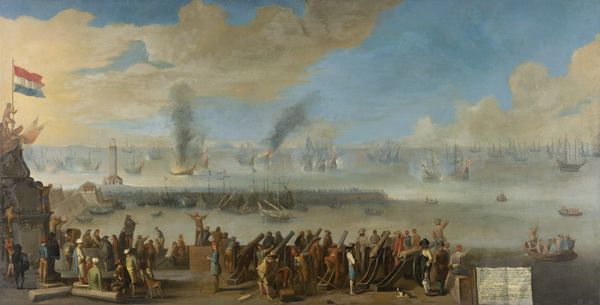
painting, oil-paint
#
baroque
#
painting
#
oil-paint
#
landscape
#
romanticism
#
cityscape
#
history-painting
Copyright: Public domain
Editor: We’re looking at "Fire on the Tiber," an oil painting by Claude-Joseph Vernet. The way the light dances on the water amidst such destruction… it’s mesmerizing, almost theatrical. What draws your eye? Curator: I'm struck by the way Vernet stages the scene. The raw materials themselves – oil, pigment, canvas – are manipulated to create this spectacle of labor amidst disaster. It almost seems to glorify the process of rebuilding after such a catastrophic fire. It almost challenges us to examine not only who benefits but also who suffers in the production of these scenes and realities they imitate. Editor: That's a very interesting perspective. I see the focus on light and drama, but you're bringing the element of labour into play. Do you mean who literally mixed the paints, made the canvas, or those depicted to rebuild in the scene? Curator: Both. Vernet had the specialized skilled labor to produce his piece. It would've involved a system of apprenticeships. Think about who’s extracting and processing the raw materials to produce the paint itself, canvas... There’s a whole network of economic dependencies and labor behind creating these luxurious, historical scenes. Similarly, in the artwork, consider the people hauling goods and assisting in rescue operations: they perform labor in the context of a historical scene which carries specific consequences and socioeconomic realities for them. Editor: I'm beginning to see that connection, how it's not just about capturing the dramatic moment but also about understanding the resources, effort, and people involved, even indirectly. Curator: Precisely. Looking at art this way demystifies the artwork and also anchors art-historical study to socio-economic realities of the historical period. Editor: That’s a totally different way of considering art than I had initially anticipated! It pulls back the curtain. Curator: Absolutely. It makes the image relevant to everyone’s everyday lives and not simply the art appreciators.
Comments
No comments
Be the first to comment and join the conversation on the ultimate creative platform.
